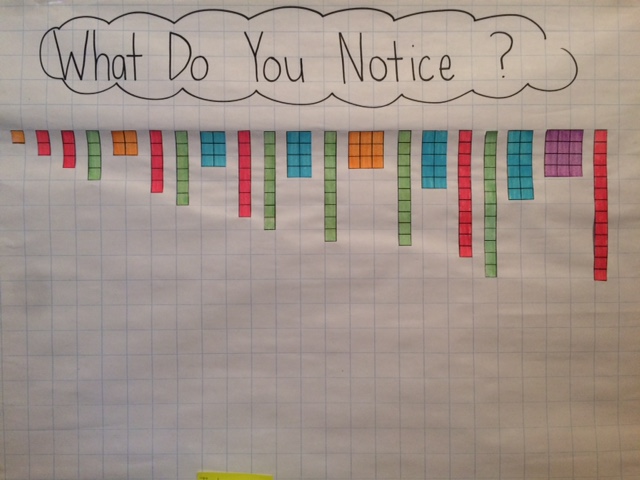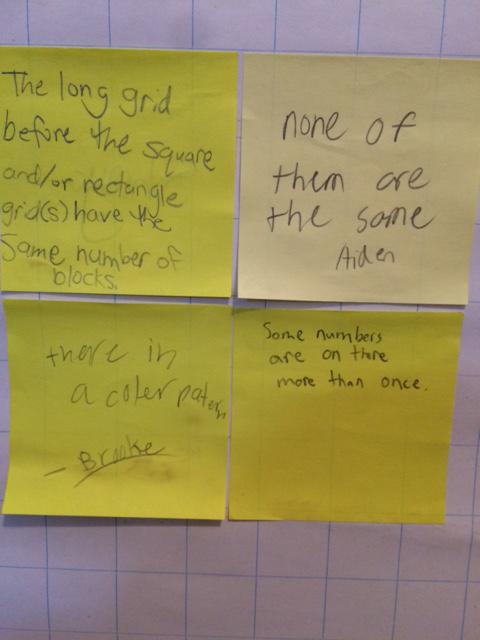
Primary students (K-2): shapes, counting, repeated addition, area
Intermediate students (3-5): classifying quadrilaterals, area model of multiplication, multiplication, prime, composite, and square numbers
For this one, I represented each number as a rectangular array. I also color-coded the arrays hoping that students would notice the relationship between the colors and the arrays that went with them. Notice how the orange arrays are square numbers. The red arrays are our prime numbers. Then I used blue for arrays that were non-square and had a length of two. Purple was non-square with a length of three.
I was also hoping that students would notice that some numbers were represented by more than one array (composite numbers). Prime numbers had only one array. Note: '1' is not a prime number which is why I colored it orange - the color of the square numbers.
This activity does a nice job of visually reinforcing the area model of multiplication: L x W = A

"The long grid before the square and/or rectangle grid(s) have the same number of blocks."
"None of them are the same."
"There is a color pattern."
"Some numbers are on there more than once."